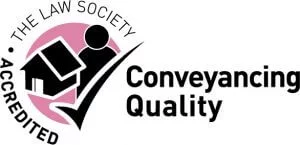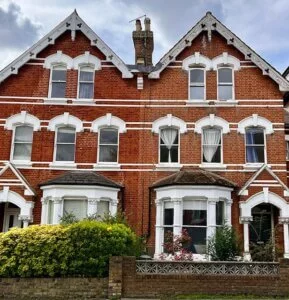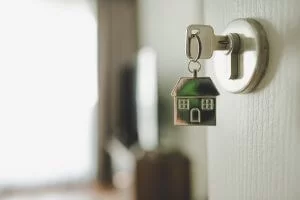Shared Ownership Stamp Duty

Contact
Table of Contents
Do you pay stamp duty on shared ownership?
When you buy a new shared ownership property, you are given two options for paying Stamp Duty Land Tax (SDLT). You can either pay on the full market value of the property (as if you were buying 100% ownership) or just on the initial share you purchase plus the rent.
On the face of it, the second option appears to be the more cost-effective as it should reduce the amount of SDLT you have to pay. However, it can lead to further SDLT charges down the line.
Paying SDLT on the initial share you purchase
Budget-conscious home buyers often choose to pay SDLT on the actual share of the property they purchase rather than on the full value of the property. This is called paying in stages.
When you pay in stages, the stamp duty will be based on:
- The price you pay for your ownership share in the property, and
- An additional amount to reflect the rent you must pay to the housing association. This is a complicated calculation based on total rent payable over the lifetime of the lease. Fortunately, HMRC provides a calculator to make life easier for you and your solicitor.
For example, if you paid £80,000 for a 25% share in a property valued at £320,000, SDLT would be payable on £80,000 plus the lease element. Currently, the SDLT threshold is £250,000 – if the consideration is below this amount, there is no SDLT to pay. This means that, unless your rent is exceptionally high, there would be no stamp duty to pay at all when you buy this property and opt to pay in stages.
- Also see: Solicitor for selling a house
Staircasing shared ownership
The disadvantage of paying SDLT in stages is that additional SDLT payments will become payable when you staircase above 80% ownership. Staircasing is where you buy additional shares in the property, increasing your ownership and reducing your rent until you eventually own 100%.
SDLT on staircasing transactions is horrendously complicated. Here’s a quick summary of how it works:
- No additional SDLT is payable if your ownership stays under 80%.
- Once you raise your ownership stake above 80%, SDLT is payable on staircasing transactions at whatever the SDLT rate is at the time.
- If you staircase in increments, for example, to 85% and then 90% ownership, then the additional SDLT may be more than you expect. That’s because HMRC treats these purchases as ‘linked transactions’ and charges SDLT on the total value of all linked transactions together. You may end up paying a higher rate of SDLT than if the transactions were counted individually.
- Depending on how your shared ownership arrangement is structured, when you sell your property you might simultaneously have to staircase your ownership to 100%. This can leave you with a nasty SDLT bill you weren’t expecting. You should be able to eliminate this charge by claiming something called stamp duty sub-sale relief – but you must talk to your solicitor about this before going ahead.
Paying SDLT on the full market value
The second option, electing to pay SDLT on the full market value, is exactly what it sounds like – you pay SDLT at the prevailing rate on the full value of the property. In the above example, SDLT would be payable on the full £320,000 even though you only paid £80,000 for a 25% share.
The applicable rate of SDLT is 5% for homes worth over £250,000 so, in this example, the SDLT bill would be £3,500. However, if this is your first home, you should be able to claim first-time buyer relief. This means you pay no SDLT at all on the first £425,000 and 5% on the portion from £425,001 to £625,000. In this example, since the full market value is £320,000, a first-time buyer would have no SDLT to pay.
The appeal of a full market value election is that it’s once-and-done. You may pay more SDLT up front, but there’s no more SDLT when you buy additional ownership in the property.
Which option do you choose?
When making a decision, you have to look into your crystal ball and think about your future plans for the property. For example, if you purchase a 25% share now, are you planning to staircase to a larger ownership? When and how will you do this? Are you likely to sell the property before you reach 80% ownership?
If you don’t plan to buy substantially more ownership, it makes sense to pay a lower SDLT bill now as you may not get many benefits from paying on the full market value.
On the other hand, if this is a long-term investment and you plan to staircase up to 100% in a few years’ time, it could make sense to pay on the full market value now, especially if you qualify for first-time buyer’s relief or you think that property values will be significantly higher in the future.
Whichever decision you make, be sure to talk to a solicitor before signing on the dotted line. Our expert team can help you calculate the SDLT you need to pay and ensure that everything is above board. SDLT on shared ownership is a minefield — don’t try to go it alone!
Share this article
Speak to a Residential Property Solicitor Today
Call us 020 7485 8811
Email us Send us an email and we’ll get back to you
Residential Property News & InsightsVIEW ALL
- 23.10.2024
Buying and Selling Homes in Hampstead Garden Suburb
Buying a house in Hampstead Garden Suburb While character, green spaces and the best of domestic architecture are big draws...
Read more - 12.8.2024
Buying a Second Home
Buying a second home is an exciting step, but it comes with several considerations, including understanding the rules for buying...
Read more - 19.5.2023
Declaration of Trust for Property
If you are buying a property jointly, you may want to consider making a declaration of trust to record your...
Read more - 13.2.2023
Transfer of Equity Stamp Duty
Do I pay Stamp Duty Land Tax when transferring Property into my partner’s name? When it comes to property...
Read more - 8.2.2023
Severance of a Joint Tenancy
Severing a Joint Tenancy Normally, when couples buy a property together they do so as joint tenants. This means they...
Read more - 8.2.2023
Tenants in Common vs Joint Tenants
Tenants in Common vs Joint Tenants: Which is best for buying a property together? When buying a property with someone...
Read more - 20.1.2023
Stamp duty tax to remain the same until 2025
Good news for buyers as the current SDLT rates will remain until 2025 Buyers looking to purchase this year will be...
Read more - 23.9.2022
First-time buyer stamp duty exemption
Stamp duty is the bane of every home buyer, with only first-time buyers being exempt from paying the tax if...
Read more - 30.8.2022
What is a transfer of equity?
Transfer of equity in divorce Transfer of equity refers to the process of transferring part or all of a property...
Read more - 26.6.2021
The Risks Of Buying Properties Off Plan!
Buying Property Off Plan The Daily Mail reported that 300 families a week have to move into shoddy newly built homes....
Read more - 30.1.2021
Making Alterations to a Leasehold Property
What is a Leasehold Property? There are two main types of property in England and Wales, freehold and leasehold property....
Read more - 5.1.2021
How to Sell Your House Quickly
10 tips for a fast house sale Thinking about marketing your property for sale? Simon Nosworthy, Conveyancing Solicitor at Osbornes, sets...
Read more - 22.5.2019
What Is Equity Release?
Equity release is a type of financial product available to homeowners which allows them to access some of the equity...
Read more - 25.3.2019
London property ‘hotspots’
Property professionals across the country have made their predictions as to what is in store for the property market over...
Read more















